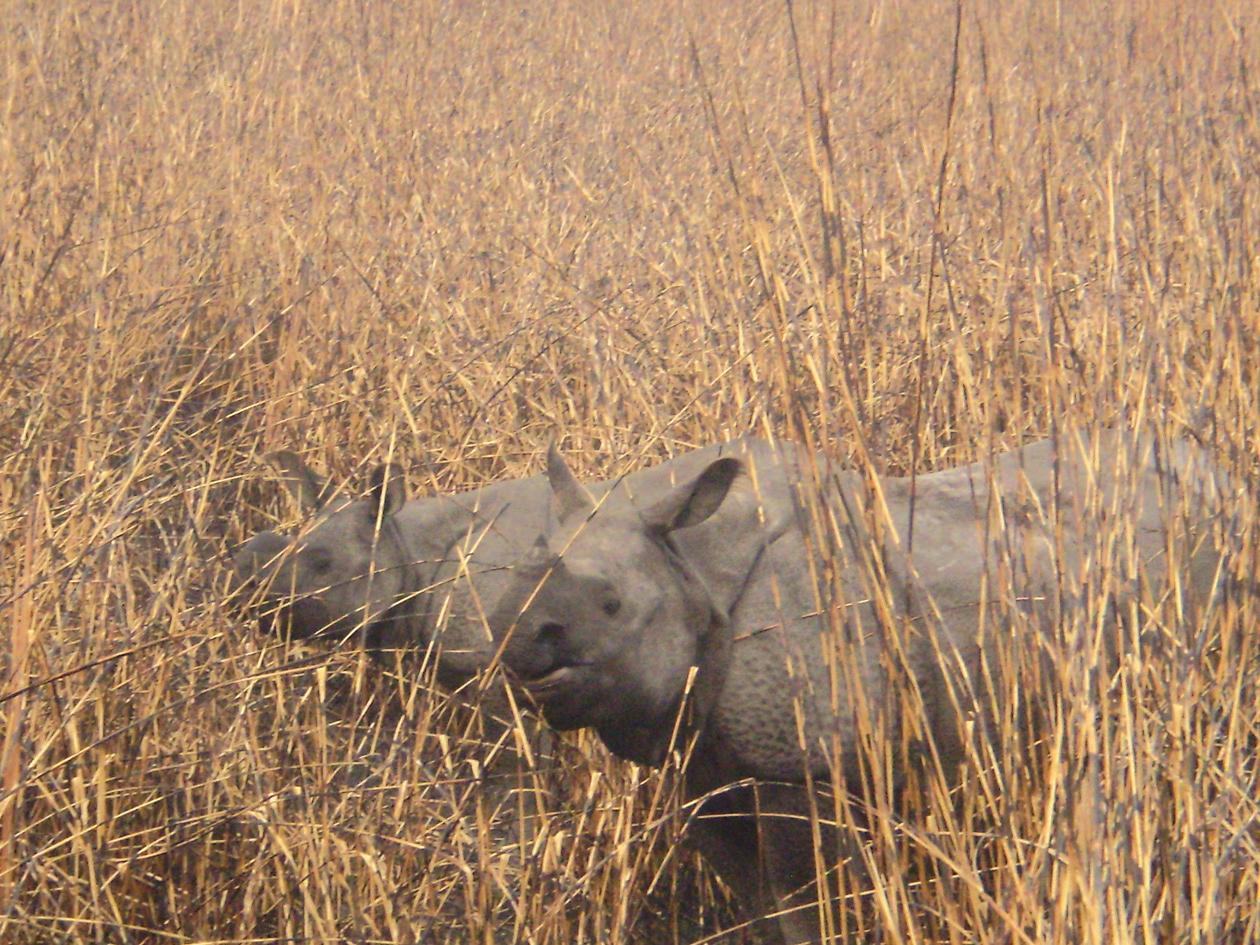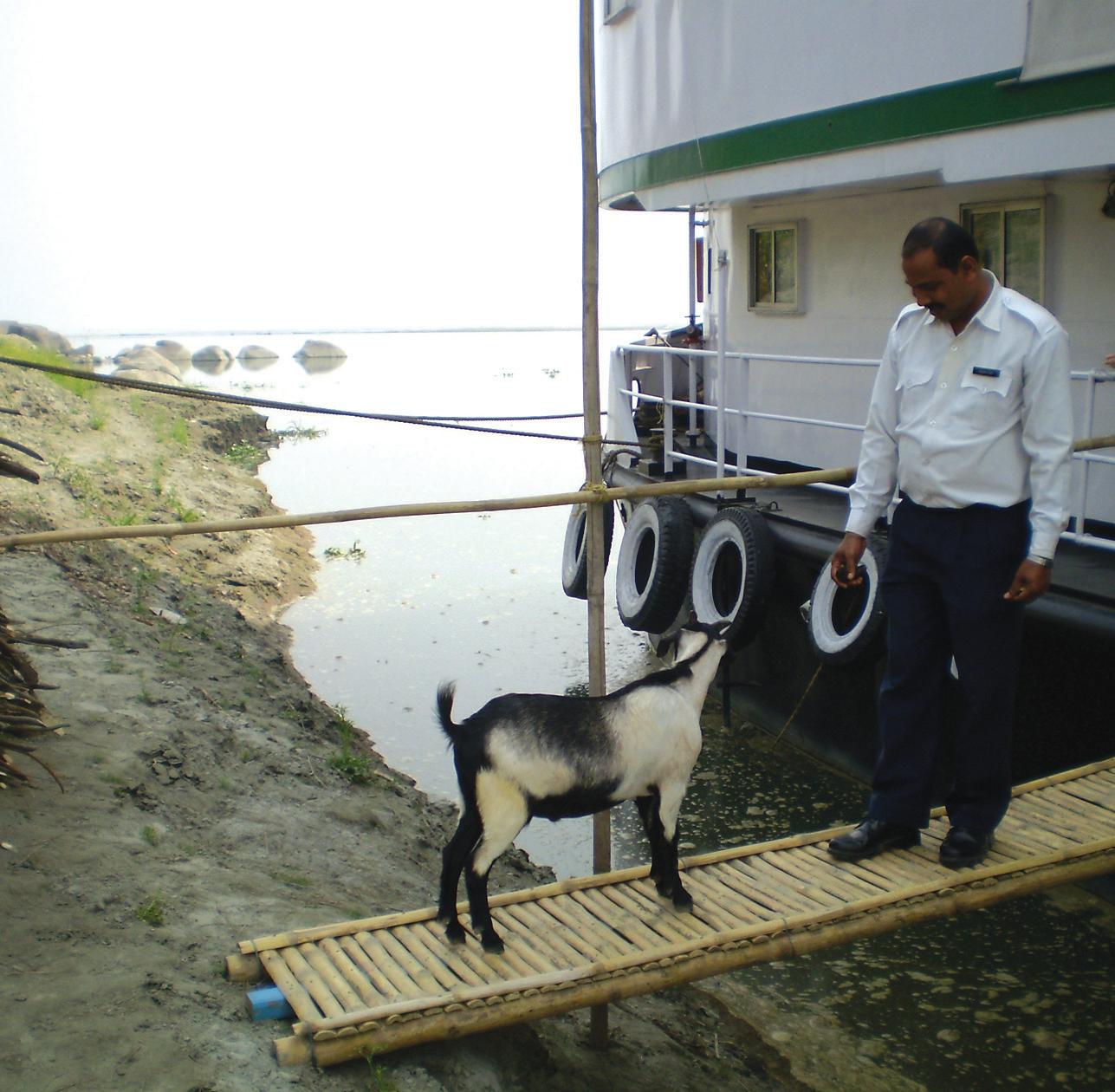
4 minute read
The heart of hinterland Assam
from 2010-07 Sydney (2)
by Indian Link
BY PETRA O’NEILL
“Turt-rels Madam, look many Turt-rels!”
Our naturalist Babajan knew his birds, and with over 450 species to be found here, he would call out excitedly whenever he spotted one we had not seen. Not birds this time, but turtles, sunning on a log.
I was in World Heritage Listed Kaziranga National Park and so far that day I’d sat behind a mahout to ride an elephant for a close up encounter with the rare one horned rhinoceros, swamp deer, wild buffalo and elephants and while we didn’t sight any tigers, their footprints were evident. Babajan was from Assam and while he was fluent in several languages, his English was self taught, from reading and tuning in to listen to the news in English. Whenever he took us to villages, tea plantations, national parks or small towns, he would be greeted people he knew. That was part of the charm of this week-long cruise upstream from Guwahati on the Assam Bengal Navigation’s RV Sukapha. The crew were mainly Assamese, courteous, eager to please and enthusiastic about sharing the wonders of their home with us.
Assam stretches for almost 800 kilometres from east to west and is dominated by the Brahmaputra, one of the world’s great rivers. Although it is for the quality of its tea that Assam is most famous, the scenery is spectacular, flanked by the Himalayas to the north and the Shillong plateau to the south. The local people come from many ethnic groups and remain predominantly tribal, which makes it culturally rich. Increasingly, it is being recognised as a wildlife destination.


Greeted at my hotel by our tour guide and driver, we explored the sights of the capital Guwahati, a relaxed and friendly city, with a market, museum, temples and War Cemetery, boarding the RV Sukapha in time for lunch. Meals are self serve, offering Assamese (milder than Indian) and western dishes. A typical meal might include locally caught fish, vegetable curry, and chapattis, followed by fruit or dessert. All meals are quite splendid, using only the freshest produce. The RV Sukapha has 12 comfortable cabins. The saloon and dining area are spacious and a large sun deck allows for 360 degree views. Most of my time onboard was spent on the sun deck to observe life on the river. There were many birds and river dolphins and Babajan was always on hand to identify them. The people in the villages we visited were welcoming and had had little contact with tourists. We were able to observe them going about their daily lives; tending to their animals, preparing their meals, carrying water from the river, while children were at school or at play. Often I would be invited into a compound built of mudbrick and rammed earth, introduced to family members and offered a chair to sit on.
At the towns, including the riverside town of Tezpur, we viewed many temples, historic sites, markets and weaving co-operatives. The cotton and highly prized golden silk fabrics known as woven by hand on fly-shuttle looms beautiful and inexpensive. I did not see textiles like this ever again in India. The jeep safaris to view wildlife, through woodland, marshes and tall elephant grass Orang National Park, were outdone by the wildlife we saw at Kaziranga National Park.
Babajan was always keen to go for a walk and we often added an impromptu walk to our day’s schedule. We were also able to go on shore as soon as we moored each day. While we went off to explore, the crew played volleyball and have contributed to the positive team spirit that was evident. I found this cruise to be relaxing, day proceeding without effort and I could easily have spent many more days onboard.
The 7 night cruise I chose commenced from Guwahati and ended at Kaziranga National Park. There are several cruises to choose from, ranging from 3 to 14 nights on the RV Charaidew Sukapha Assam Bengal Navigation also owns Diphlu River Lodge, overlooking Kaziranga National Park. The company is an Indo-British joint venture that launched cruises on the Brahmaputra river since 2003 and also offers cruises on the Hooghly and Ganges. Whenever I made inquiries about how get to Guwahati and where to stay, I did not was the co-owner and Chairman, Andrew Brock who replied. The staff care and it shows, perhaps because the company is owned and managed by people who are passionate about providing opportunities to travel to remote areas, while ensuring there is no adverse impact on the local people or environment. The Brahmaputra is a river that appeared to be easy to navigate, or perhaps it was more the skill of our Captain that made it appear so. For centuries the passes and valleys were at the great crossroads of commerce, culture and people that linked India to South East Asia. This cruise provides an opportunity to imagine how travelling must have been at a time when items of trade were conveyed by river.

Getting There
There are several ways of reaching Assam from Australia. I flew with Malaysia Airlines to Kuala Lumpur and onward with Air Asia to Kolkata. Several airlines fly from Kolkata to Guwahati, but perhaps Jet Airways is the most reliable. I could also have flown with Jet Airways from Sydney to Assam via Singapore. I booked the trip directly with Assam Bengal Navigation at www.assambengalnavigation. com. Active Travel, with offices in Canberra and Sydney, can make all land and flight arrangements. Contact Robert Fletcher at robert@activetravel.com.au or visit www.activetravel.com.au Kolkata is deserving of a few nights’ stay. The Oberoi Grand is a beautiful, historic, luxurious hotel and service standards are very high. The utterly charming Fairlawn Hotel is run by Mrs Violet Smith, who has managed the hotel since 1936. Airport taxis in India are inexpensive, though you should purchase a prepaid coupon.








